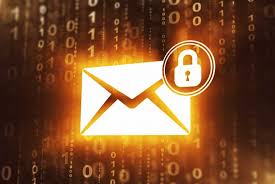Introduction
In today's digital age, email has become an integral part of our personal and professional lives. However, with the rise of phishing attacks and online scams, it's essential to verify the authenticity of an email before taking any action. In this comprehensive guide, we will explore various methods and techniques to determine whether an email is real or potentially malicious. By following these steps, you can protect yourself from falling victim to email scams and safeguard your personal information.
Understanding Email Verification
Email verification is the process of confirming the validity and authenticity of an email address. It involves checking various factors such as the email format, domain existence, and server response to determine if the email is real or potentially fake. While it's impossible to guarantee 100% accuracy in detecting all fake emails, there are several techniques you can use to make an informed assessment.
1. Validate the Email Format: One of the initial steps in checking the authenticity of an email is to examine its format. Legitimate email addresses typically follow a specific structure: [email protected] or [email protected] If the email address you're assessing has a suspicious or irregular format, it may raise a red flag.
2. Verify the Domain: The domain is the part of the email address that follows the '@' symbol. Checking the domain can provide insights into the legitimacy of the email. Start by conducting a simple web search to determine if the domain is associated with a reputable organization or if it has been reported for fraudulent activities. Additionally, you can verify the domain's registration details using WHOIS lookup tools.
3. Check for Email Authentication: Email authentication protocols such as SPF (Sender Policy Framework), DKIM (DomainKeys Identified Mail), and DMARC (Domain-based Message Authentication, Reporting, and Conformance) help validate the legitimacy of an email. These protocols allow the receiving server to verify that the email originates from an authorized source. You can check for email authentication by examining the email headers or using online email authentication tools.
4. Analyze the Email Content: Pay close attention to the content of the email. Look for spelling and grammatical errors, generic greetings, urgent requests for personal information, or suspicious attachments or links. Legitimate organizations usually maintain a professional tone and provide accurate and specific information in their emails. Be cautious if the email seems poorly written or attempts to create a sense of urgency.
5. Be Wary of Phishing Indicators: Phishing emails are designed to trick recipients into revealing sensitive information or performing malicious actions. Look out for common phishing indicators such as misspelled URLs, mismatched branding, requests for personal or financial information, or unexpected attachments or downloads. If an email exhibits these signs, exercise extreme caution and refrain from clicking on any suspicious links or providing personal data.
Frequently Asked Questions
Q: Can email verification methods guarantee the detection of all fake emails?
A: While email verification methods can significantly help in identifying fake emails, it's important to note that scammers continually evolve their tactics. Therefore, it's impossible to guarantee 100% accuracy in detecting all fake emails. It's crucial to remain vigilant and employ multiple verification techniques to enhance your email security.
Q: Are there any online tools available to check the validity of an email?
A: Yes, there are several online tools that can assist you in verifying the validity of an email. These tools analyze various factors such as the email format, domain reputation, and email authentication to provide an assessment of the email's legitimacy. Examples of such tools include Email-Checker, Clean Email Verifier, and other reputable email verification services.
Q: What should I do if I receive a suspicious email?
A: If you receive a suspicious email, it's important not to interact with it or provide any personal information. Avoid clicking on any links or downloading attachments. Instead, report the email as spam or phishing to your email provider and delete it immediately. By doing so, you help protect yourself and others from potential scams.
Conclusion
As cyber threats continue to evolve, it's crucial to remain vigilant when it comes to email security. By understanding the various techniques for verifying the authenticity of an email, you can significantly reduce the risk of falling victim to phishing attacks or scams. Remember to validate the email format, verify the domain, check for email authentication, analyze the email content, and be wary of phishing indicators. By incorporating these practices into your email usage, you can ensure a safer and more secure online experience.



